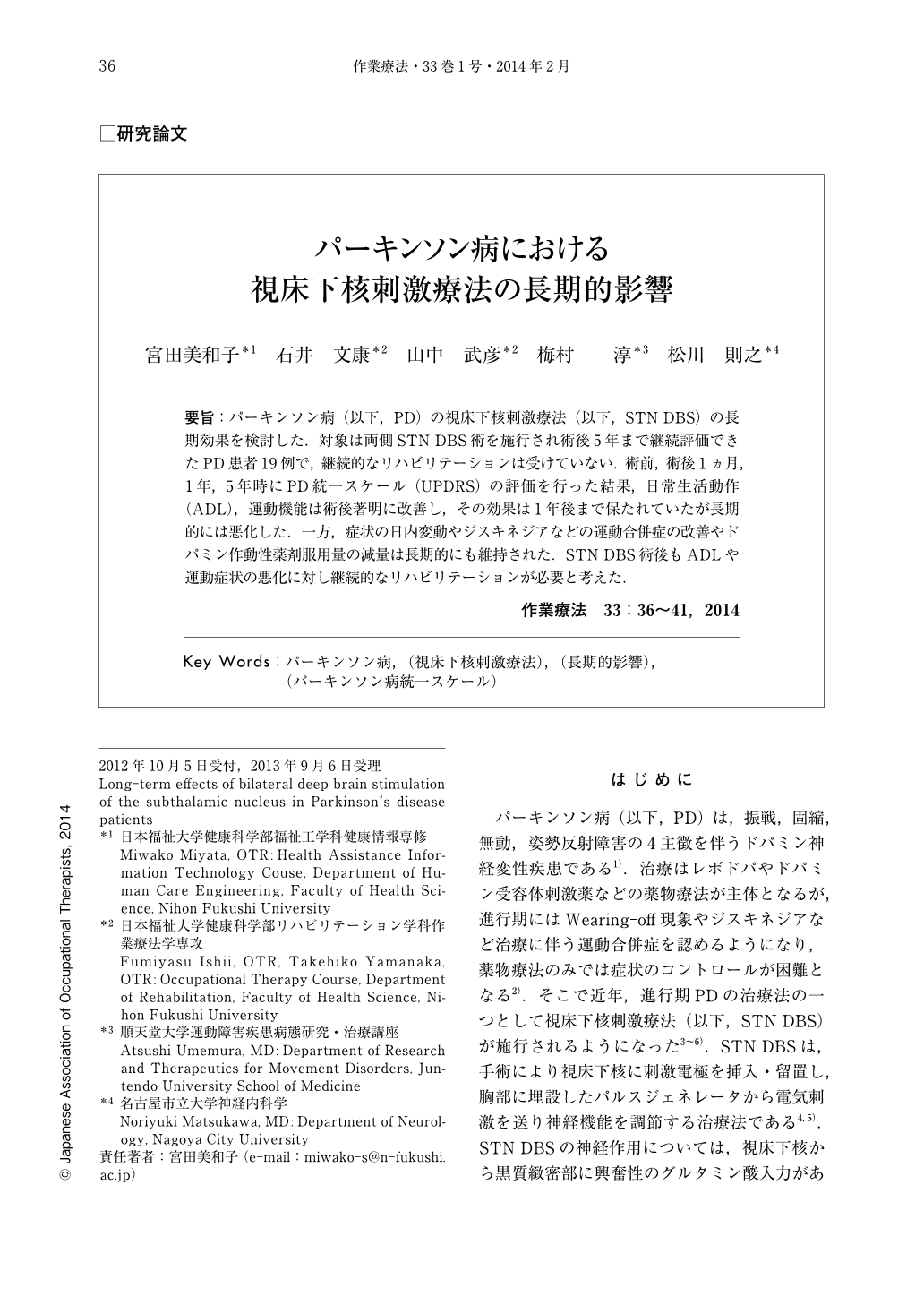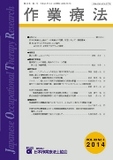Japanese
English
- 販売していません
- Abstract 文献概要
- 1ページ目 Look Inside
- 参考文献 Reference
要旨:パーキンソン病(以下,PD)の視床下核刺激療法(以下,STN DBS)の長期効果を検討した.対象は両側STN DBS術を施行され術後5年まで継続評価できたPD患者19例で,継続的なリハビリテーションは受けていない.術前,術後1ヵ月,1年,5年時にPD統一スケール(UPDRS)の評価を行った結果,日常生活動作(ADL),運動機能は術後著明に改善し,その効果は1年後まで保たれていたが長期的には悪化した.一方,症状の日内変動やジスキネジアなどの運動合併症の改善やドパミン作動性薬剤服用量の減量は長期的にも維持された.STN DBS術後もADLや運動症状の悪化に対し継続的なリハビリテーションが必要と考えた.
Object: The aim of this study was to investigate long-term effects of bilateral deep brain stimulation (DBS) of the subthalamic nucleus (STN) in Parkinson's disease (PD) patients. Method: Nineteen PD patients who underwent STN DBS were enrolled in this study. These patients didn't undergo continuous rehabilitation, and patients were examined using the Unified Parkinson's Disease Rating Scale (UPDRS) Part 1-4 before surgery, and 1 month, 1 and 5 years after surgery. Results: STN DBS yielded significant improvements in Activities of Daily Living (ADL) and in motor scores in the non-medication period at 1 year. However, these effects deteriorated between 1 and 5 years after surgery. In addition, STN DBS significantly reduced motor fluctuation, dyskinesia and the necessity for dopaminergic medication. These effects continued until 5 years after surgery. Conclusion: As ADL and motor function deteriorate after STN DBS, continuous intervention of rehabilitation is required.

Copyright © 2014, Japanese Association of Occupational Therapists. All rights reserved.


